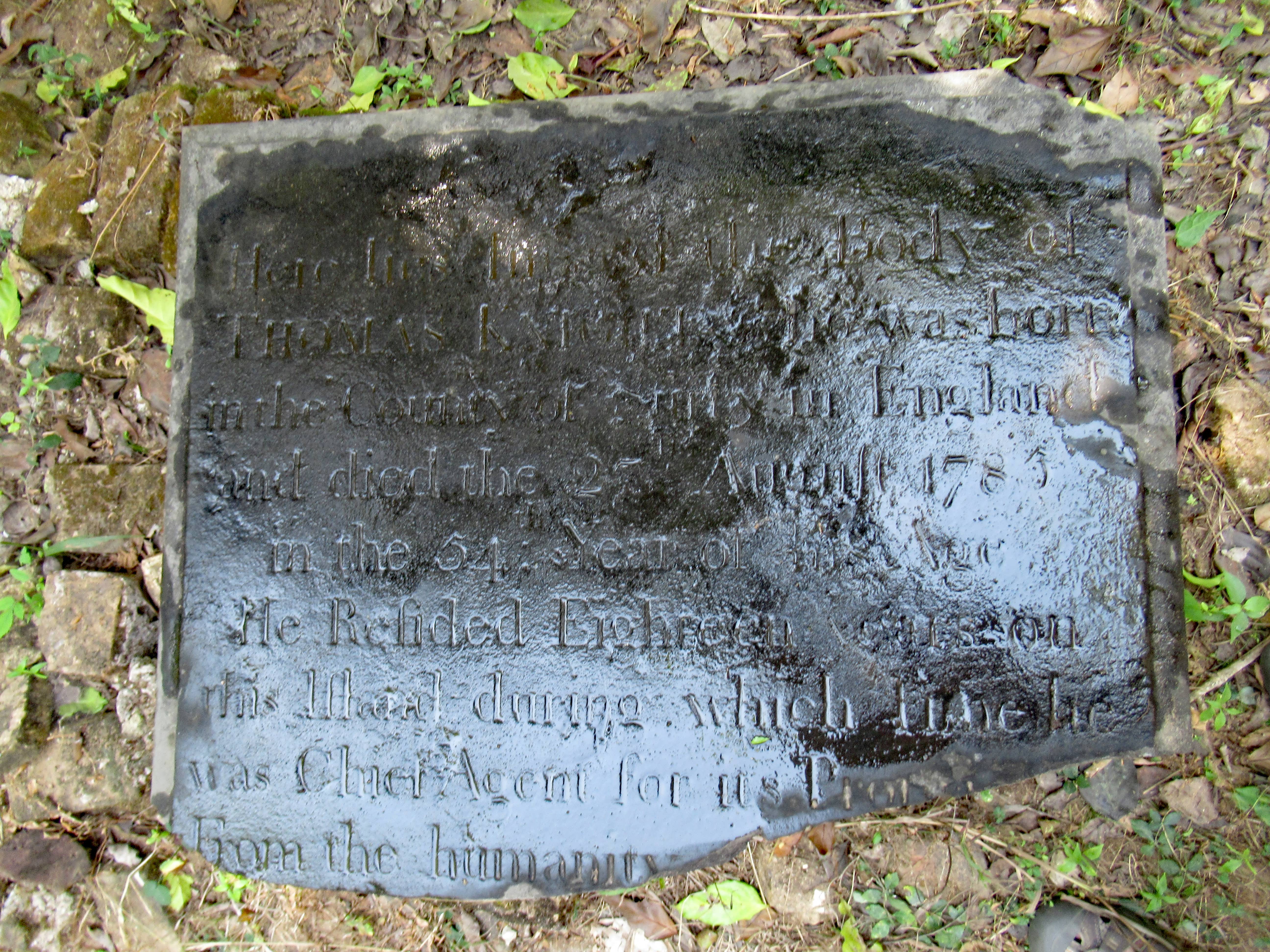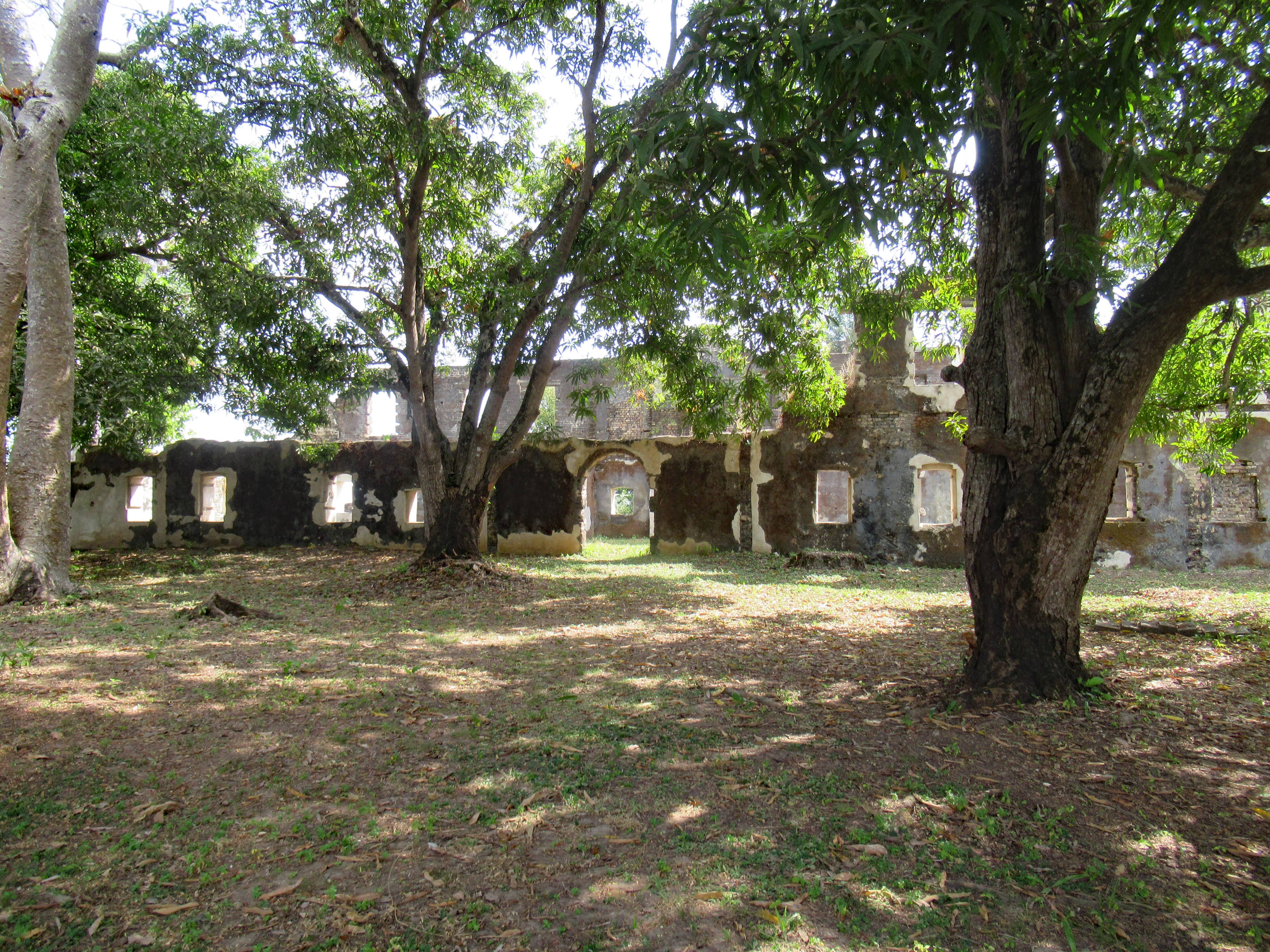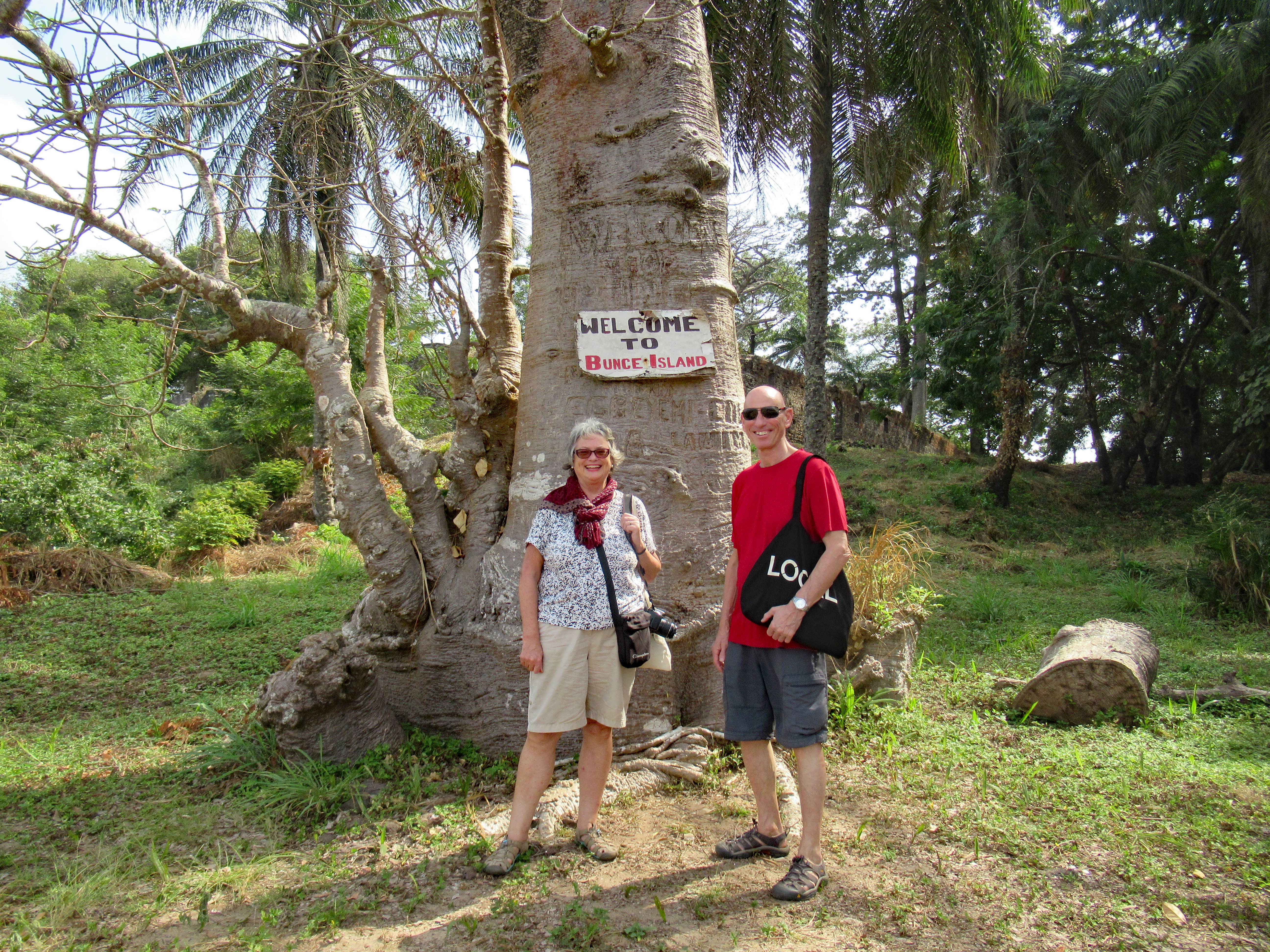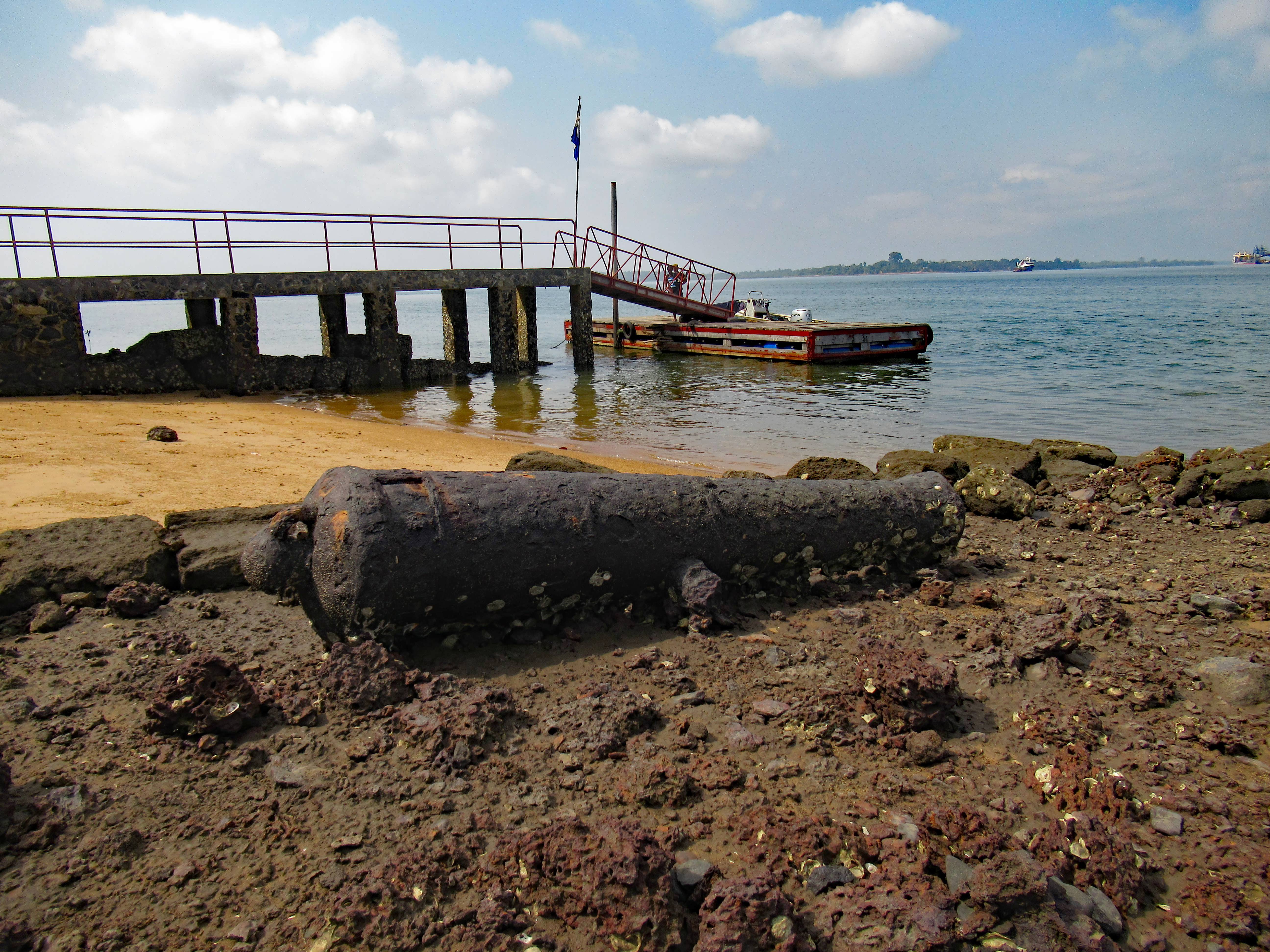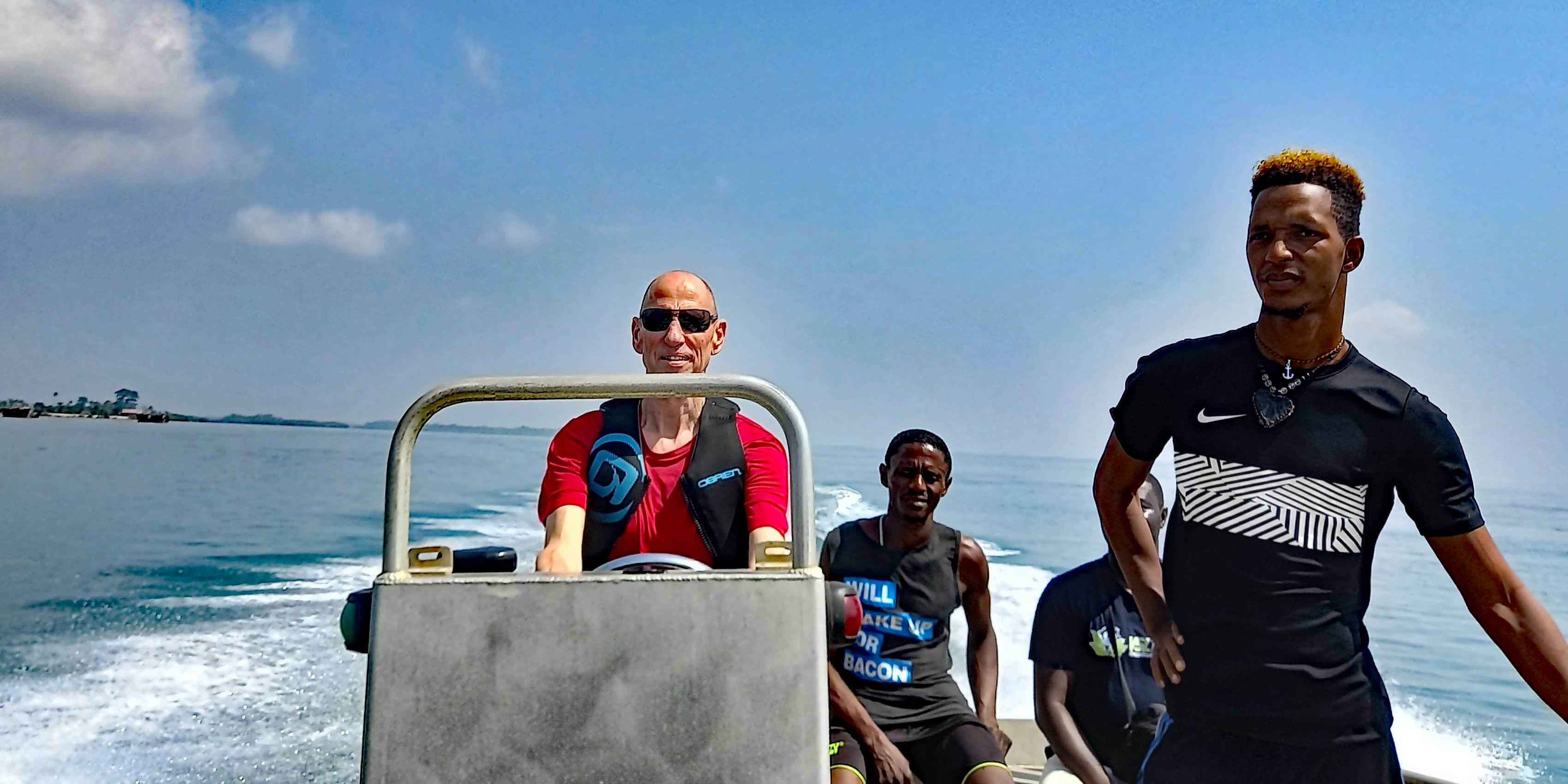Bunce Island in Sierra Leone was a slave trading station, and in 140 years of operation (1670 to 1807), British traders purchased, imprisoned and shipped an estimated 50,000 slaves from Bunce to the Americas, notably rice planters to South Carolina and Georgia. Following slavery’s abolition, the island was used as a saw mill and trading post until they were abandoned as unviable in 1840.
A 10-minute drive from the Home Suites Boutique Hotel took us to the Freetown Aqua Sports Club where we negotiated a wobbly jetty made from taped together plastic canisters, crossed one boat and finally clambered into our metal speedboat, Salty Nutz. Life jackets were donned, and we sat at the front, with our guide Abdulai at the back, along with the captain and crew member.
We passed the public ferry terminal, Kakim Island, and Tasso Island (trade moved from Tasso to Bunce as due to its size, it was easier for the slaves to escape).
After a bumpy and pretty uncomfortable 45-minute trip, we arrived and walked up the jetty, retracing the steps the slaves would have taken. An old cannon stood out on the exposed shoreline, whilst on terra firma, a sign nailed to a baobab tree said, ‘welcome to Bunce Island’ and information boards provided details of its bleak history.
Although the island was declared a National Monument in 1948, there has been little restoration, leaving crumbling walls, overgrown trees and creeping plants. Abdulai explained each of the various areas. A stone circle marked where the British flag would have flown from, whilst the lookout area had canons marked with the royal emblem of King George III. We walked through the ruins of the building where the slave masters would have lived, with its outer area for the junior men and more central Chief Agent’s home overlooking the segregated, open-air slave yard. There was the remains of the blacksmiths, who would have made the shackles, the secretariat, where the paperwork was completed, a cook house and an underground storage for gunpowder, munitions and other valuables.
We made our way to the shore, and found broken oyster shells, used as building materials, before continuing on a well-maintained path to two cemeteries. In one, two prominent black people were buried, and at the second, where the whites were buried, Abdulai poured water onto the headstone to make the inscription clearer – someone who had lived on the island for 18 years.
During our 50-minute tour, we were the only visitors, and the peace and tranquillity belied its sad and dark past.
Whilst the walking was reasonable, you need to be resilient and relatively sure footed both to contend with the journey there and the uneven paths.
The journey back was equally bumpy, and at one point Roy was invited to take over the helm which he did admirably.
